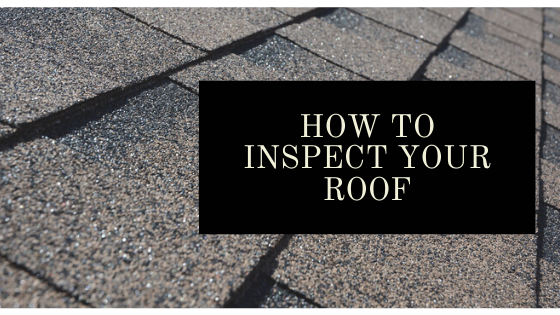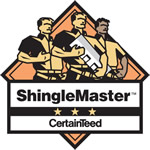How to Inspect Your Roof

The roof is one of the most essential parts of the building. It refers to the top covering of the building, including all materials and constructions necessary to support it on the walls of the building or on uprights. It provides protection against external factors, such as temperature, wind, snow, sunlight, and rain. Basically, the roof is construed into two parts:
Support
The support of the roof comprises of beams that are long and strong. It needs to be made of a rigid material as its function is to support the roof. The support can be made of cast iron, steel, bamboo, even reinforced concrete beam in which metal rods are encased in concrete to give it strength under tension.
Outer layer
This part of the roof shows great variation dependent upon the availability of the material. The material which it is made of differs according to the outdoor weather that it would be exposed to and the local material that is most available. There is a natural roof that is made from thatches, which can last with a life span of forty years. The characteristic of a roof is dependable on the purpose of the building that it covers. However, after a certain point after installation, it is important to check and schedule an inspection.
The inspection can be done by a professional. If you want to do it yourself, then this article is right for you. You will need to climb up the roof and check it. In general, an inspection has to be done twice a day, or whenever the roof is exposed to an extreme weather condition such as severe storm, or severe hail. The sooner the problem is being spotted, the less money that you will need to fix it.
Visual inspection requires knowing what to look for. You can climb up the roof, use a binocular or even a drone-mounted camera. In addition to checking the roof, there are several other things that you will need to look out for such as; under the eaves and overhangs, the fascia, and gutter for any water damage. Check around all the roof interruptions such as skylight, dormers, chimneys, satellite dishes and vent pipes.
Underneath is what you need to look specifically dependable on the type of roof material that you are using:
Asphalt Roofing
Asphalt roofing surfaces are granular. When it ages, they become brittle from the sun and exposure of other elements. The granules then would detach from the shingles. Check in the gutters and at the end of the downspouts for granules deposits.
Inspect the roof for spots that look bare. Be on a lookout for the missing, torn or warped shingles. When the edges of the shingles are curling, it meant that they have outlived their usefulness and will need to be replaced.
Metal roof
A metal roof is commonly made from aluminum, steel or galvanized iron. Most of them have the life of expectancy of fifty years. Check the seams, corners, and joints for loose, dried out, and peeling caulk.
Tile roof
The most common types of tile roof are made of clay, concrete and terra cotta. They often last longer than any other type of roof. However, they can leak sooner dependable on the quality of workmanship. Dependable on where the house or building is located, they are regulated to be attached with nails, construction adhesive, battens, screws or combination of fasteners.
Whenever you are doing an inspection for your roof, avoid walking over these materials as it is brittle and can break. Look out for missing tiles or ones that are chipped or broken.
Wooden shingles
This is another material that you should not be walking over. Inspect these roofs from a ladder, with binoculars and a drone camera. Wood shingles are sawed and tapered. They can get deteriorated with the weather over time. In general, try to see if there are missing rotted, warped, or broken shingles.
Not only inspecting the condition of the roof, inspect other things such as:
- Gutters for any open joints, sagging or not.
- Counter flashing, for any damages, cracks or obvious leaks. Counter flashing is a metal, waterproof strip to help keep out moisture.
- If you have any attic, check for any drips or leaking.
- Be on the lookout for wall or ceiling deteriorating, drips or sagging.
Sounds complicated? It does not have to be! Underneath is the simple step on how to inspect your roof:
- Walk around your home’s exterior. Inspect from the ground for any sign of damage, sagging or aging. Take notes of the possible area in need of closer inspection.
- Identify areas with algae, moss or piles of leaves. These are the areas where leaks and water damage are most often found.
- Keep on a lookout for broken or curled shingles.
- Look for any damaged, missing, or aged shingles. When you take your time to inspect the roof, you can catch minor issues followed by serious damage.
- Clean your gutter and overhangs regularly. Maintain your downspouts. Take note of any open joins or any sign of rot when you are performing these tasks.
- Look for granule loss. Granule loss indicates that shingles have aged or have been affected by severe weather, and are no longer protecting your home against damaging storms.
Takeaway
The roof is one of the most important parts of our house. It is very important to choose a material that is most suitable according to where the house is located. But the next thing to do is to perform regular maintenance to ensure that the roof is in good condition. If you as a homeowner is not able to do it yourself, then do not hesitate to hire a professional. It is also important to invest in good quality workmanship over cheap price with bad quality of work.

In Awe Roofing Limited is an Award-Winning, family owned and operated Vancouver Roofing Contractor with over 17 years of roofing experience. We serve the entire Lower Mainland area, from Whistler to Chilliwack, employing a team of professional staff members. Our team has won numerous awards including Best of Homestars for the last five years, and Three Best Rated six years in a row. Learn more






















